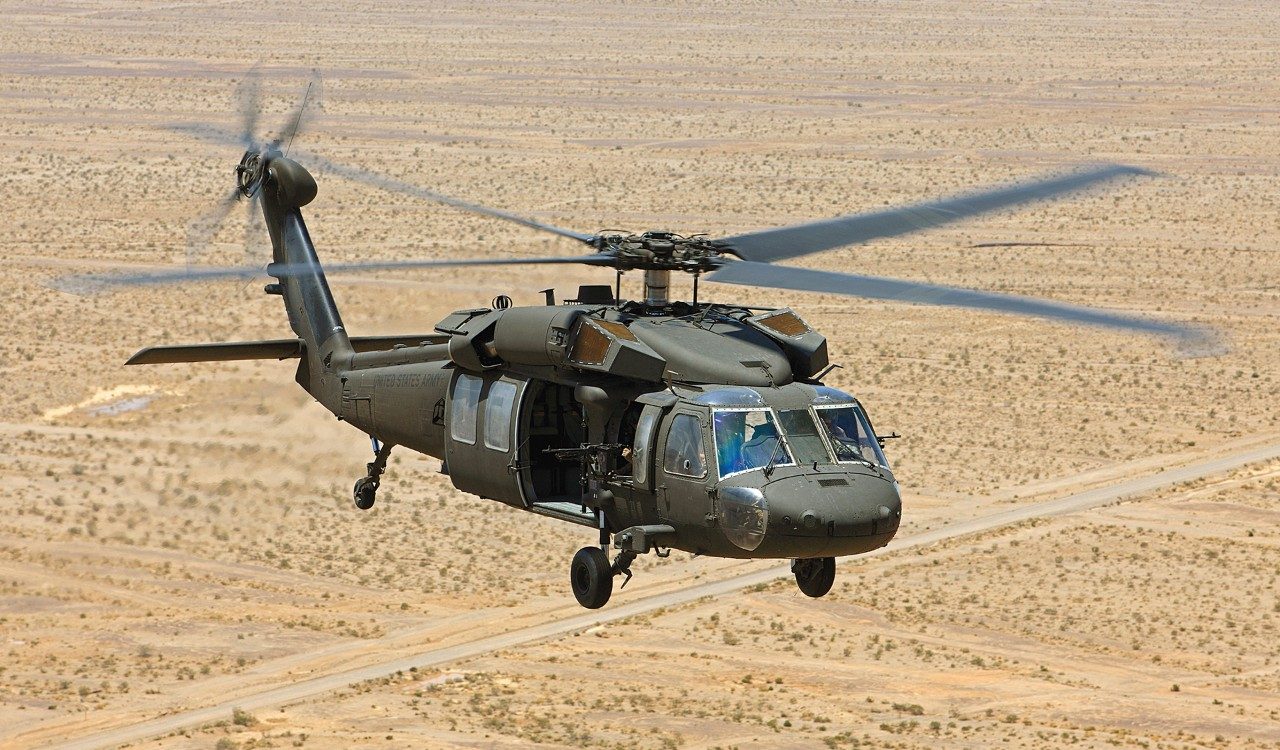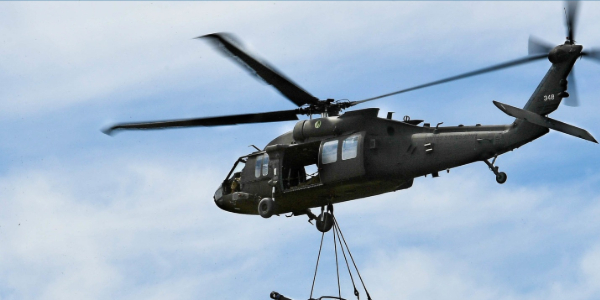Upkeep and Maintenance for UH 60 Helicopters
Upkeep and Maintenance for UH 60 Helicopters
Blog Article
The Influence of Lasting Practices on the Future of Aircraft Workflow and Emissions Reduction
As the air travel sector encounters increasing analysis over its ecological influence, the adoption of sustainable techniques emerges as an important pathway towards future aircraft operations and emissions decrease. Advancements in lasting aeronautics gas and improvements in crossbreed propulsion innovations stand at the center of this improvement, appealing substantial decreases in greenhouse gas emissions. The effective combination of these campaigns hinges on a range of variables, including regulative frameworks and industry partnership. The question remains: exactly how will these advancing techniques reshape the dynamics of air travel and add to a much more lasting future?

Review of Lasting Practices
Lasting practices in airplane procedures incorporate a variety of techniques aimed at minimizing ecological effect while maintaining operational efficiency. These techniques are vital in the air travel market's dedication to reducing its carbon footprint and sticking to global environmental requirements. Trick campaigns include enhancing flight paths to lower fuel consumption, enhancing maintenance protocols to make sure airplane operate at peak performance, and carrying out innovative innovations such as winglets and light-weight products that improve the rules of aerodynamics.

Training and involving personnel on sustainability methods also play a vital function, promoting a society of ecological responsibility within organizations. Generally, the assimilation of these lasting techniques not only aids decrease emissions yet also enhances the lasting viability of the air travel industry, guaranteeing it satisfies the needs of both customers and regulative bodies while adding to international sustainability objectives.
Innovative Fuel Alternatives
Many cutting-edge fuel options are emerging as essential options to minimize the aviation sector's reliance on traditional fossil fuels. Among these options, Sustainable Air travel Fuels (SAFs) have actually gotten significant attention due to their potential to reduce lifecycle greenhouse gas emissions by approximately 80% contrasted to traditional jet fuels. SAFs are originated from various feedstocks, consisting of waste oils, farming deposits, and even algae, making them a functional choice for the market.
One more encouraging choice is hydrogen gas, which, when used in gas cells, creates just water vapor as a byproduct. Additionally, electrical propulsion systems are being checked out, leveraging battery technology to power airplane.
Lastly, biofuels stemmed from biomass are being explored, providing an eco-friendly choice that can be blended with standard fuels. Jointly, these ingenious gas alternatives stand for a critical step toward accomplishing a sustainable air travel community, straightening with worldwide exhausts decrease targets and improving the industry's environmental stewardship.
Technical Developments in Aeronautics

Exactly how can technical developments improve the future of aviation? The assimilation of cutting-edge innovations is pivotal in transforming airplane operations, improving performance, and lowering emissions. Innovations such as hybrid and electric propulsion systems go to the center, promising considerable reductions in fuel consumption and greenhouse gas exhausts. These systems utilize advancements in battery innovation and energy management, allowing aircraft to operate with a reduced environmental footprint.
In addition, the execution of innovative products, such as light-weight compounds, adds to enhanced the rules of aerodynamics and gas efficiency. Making use of fabricated intelligence and machine discovering in trip procedures optimizes route preparation and lowers fuel melt by making it possible for real-time modifications based on weather condition and website traffic conditions. Furthermore, the advancement of self-governing and remotely piloted aircraft systems stands to revolutionize cargo and guest transport, potentially boosting efficiency while decreasing human mistake.
In addition, sustainable aeronautics modern technologies, including advanced air traffic administration systems, can decrease and enhance procedures congestion, causing reduced emissions throughout trip. These developments jointly represent a standard shift in aeronautics, promising a future where sustainability and functional efficiency are intertwined, thus supporting the market's commitment to decreasing its environmental effect.

Regulatory Framework and Compliance
Because of the growing emphasis on ecological stewardship within the air travel sector, the governing framework regulating airplane operations is advancing to advertise sustainable techniques. Regulative bodies, such as the International Civil Aeronautics Organization (ICAO) and different national aeronautics authorities, are introducing stringent guidelines targeted at reducing exhausts and improving operational performance.
These regulations frequently consist of the adoption of Lasting Aeronautics Fuel (SAF), which has been recognized as a crucial element in achieving lower carbon footprints. Additionally, visit this website conformity with these laws needs airline companies to carry out operational practices and advanced technologies, such as maximized trip courses and boosted air web traffic management, to minimize gas usage.
In addition, the enforcement of exhausts trading systems and carbon balancing out initiatives is coming to be progressively prevalent, compelling airlines to check and report their discharges accurately. Non-compliance can lead to significant charges, therefore pressing operators to prioritize sustainability in their organization designs.
Inevitably, the progressing governing landscape not just drives advancement and financial investment in eco-friendly modern technologies but likewise fosters a society of responsibility within the aeronautics industry. As these structures remain to create, the concentrate on sustainable methods will certainly be integral to accomplishing the sector's long-lasting ecological objectives.
Future Fads in Aircraft Workflow
As the aviation industry adapts to a progressively strict regulative setting, future patterns in aircraft procedures are established to concentrate on innovative options that better boost sustainability and performance - uh 60. Trick developments will likely include the fostering of sophisticated air traffic administration systems, which make use of real-time data and synthetic intelligence to maximize trip paths, reducing fuel consumption and discharges
One more considerable pattern is the boosted assimilation of lasting i was reading this aeronautics gas (SAFs) These choices to conventional jet fuel, stemmed from sustainable sources, can substantially lower lifecycle greenhouse gas discharges. The sector's commitment to SAFs will likely increase as airline companies collaborate with gas producers to make sure accessibility and cost-effectiveness.
In addition, the press towards electrification and crossbreed propulsion systems is obtaining energy. Arising aircraft styles will certainly incorporate these technologies, offering quieter and more efficient procedures, specifically for short-haul flights.
Final Thought
The adoption of lasting aeronautics gas, coupled with innovations in electric and hybrid propulsion systems, is necessary for minimizing lifecycle greenhouse gas emissions. Optimizing trip courses and accepting cutting-edge technologies contribute to a check it out quieter and more ecologically friendly aviation market.
Developments in sustainable aviation fuels and improvements in crossbreed propulsion modern technologies stand at the leading edge of this change, promising considerable decreases in greenhouse gas exhausts.Many cutting-edge gas options are arising as pivotal services to minimize the aviation market's reliance on traditional fossil fuels - uh 60. Among these options, Sustainable Aviation Gas (SAFs) have gotten substantial attention due to their potential to decrease lifecycle greenhouse gas discharges by up to 80% compared to standard jet fuels.Another considerable pattern is the raised integration of sustainable air travel gas (SAFs) The adoption of sustainable air travel gas, coupled with advancements in hybrid and electrical propulsion systems, is vital for decreasing lifecycle greenhouse gas exhausts
Report this page